Premium Only Content
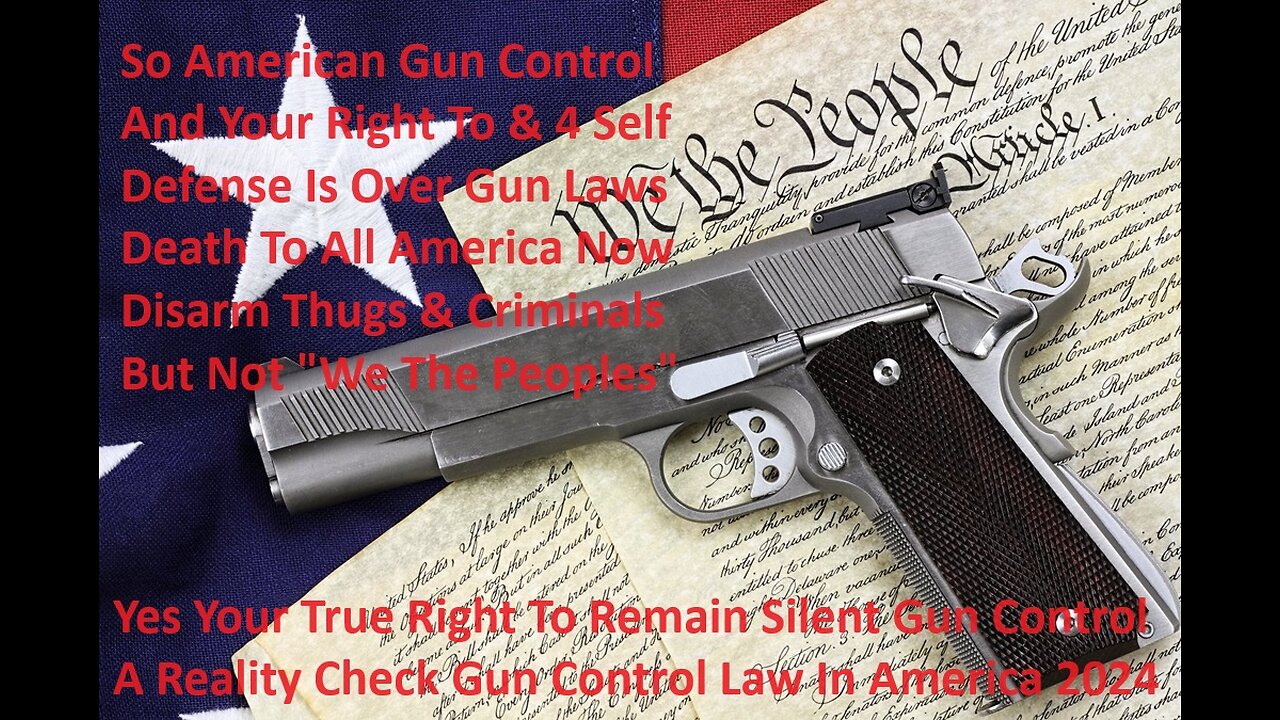
Your Right To Remain Silent Gun Control Reality Check Gun Control In America 2024
Yes Its Your Right To Remain Silent Now... So Shut Up Already Now And Today. So The first true semi-automatic rifle was introduced in 1885, the first semi-automatic pistol in 1892, and the first semi-automatic shotgun in 1902. Semi-automatics account for about 20 percent of the 300 million privately-owned firearms in the United States and the percentage is quickly rising, because semi-automatics now account for about 50 percent of all new firearms bought annually.
A semi-automatic rifle or semi-automatic pistol is an autoloading rifle or semi-automatic pistol that fires a single cartridge with each pull of the trigger, and uses part of the fired cartridge's energy to eject the case and load another cartridge into the chamber. For comparison, a single shot, derringer pistol and a bolt-action rifle requires the user to cycle the bolt manually before they can fire a second time, and a fully automatic rifle or pistol fires continuously until the trigger is released. This is called a Fully Automatic Sub Machine Guns.
That All 50 State Gun Laws We Will Not Comply Dishonest U.S. Administration. - https://rumble.com/playlists/WSweR1YBfAk
The AR-15/M-16 Is a regular rifle. Is it because it’s black and scary looking? Is it because it’s a semi-automatic? Is it because the leftist media says so. What’s the difference between these two rifles. The top is the AR-15/M-16. The one under it is the Ruger Mini-14/ Etc.# Guns. One is black, the other has a normal looking wooden stock. Guess what? They both shoot the same 5.56x45/.223 cartridge. They are both semi-automatic. both will fire as fast as you can pull the trigger. So, if you’re afraid of the AR-15 because it’s black and scary looking, it’s time you grew up and act like an adult. If it’s because the leftist media says so, then it’s time you start thinking for yourself. The AR-15/M-16 has the same sporting purpose as the Mini-14 / Other Guns. Hell, it has the same home defenses or sporting purpose as any rifle. Every day the news media appears to revel in upping the fear index by showing pictures of mobile clinics and morgues being erected in cities like New York. We’re shown “leaked” pictures of body bags with what appears to be corpses inside stacked up in said morgues. I think it’s important to bear in mind that the government and media have been lying to the American people for many decades. This is a fact, not a conspiracy theory. To drive the point home our current Secretary of State Mike Pompeo recently joked about the fact that government agents are indoctrinated in techniques to lie, cheat and steal. They are trying to destroy our Constitution, the very document they all swore to uphold. We the people must stand up to this blatant attack on our rights. It’s time to get some backbone and push back against those who claim to want to protect us but really want to enslave us. New World Order Says That All 50 State Will Not Comply Dishonest and Lying about Agenda U.N. 21 and Plan to Control and Enslave the New World Order Administration.
ASSAULT RIFLE BAN AND THE SUPREME COURT OF THE UNITED STATES - FUNNY ? - https://rumble.com/v2kzj20-assault-rifle-ban-and-the-supreme-court-of-the-united-states-funny-.html
So Per Gun Laws U.S.A. Government DOA-DOJ-FBI-CIA-Etc. Everyone In U.S.A. All Person And Or America Citizens Right Now Today Is A Criminal As of Oct 2023 Need To Be In Jail Or Pay $$$ Fines Now. Per all federal and local police and all government agencies. All The America People Break The Law's Average 3 Times Everyday with A Average Fine of $512 dollars a day. it add up to $512 x 365 days in a year add up to $186,880 Dollars per year in fines per every person alive today right now. also federal and local agencies issue an average of 27 rules for every law over the past decade.
However, the rules issued in a given year are typically not substantively related to the current year’s laws, as agency output represents ongoing implementation of earlier legislation. Remember Ignorance of the law is a fundamental legal principle in the US that means that if someone breaks the law, they are still liable even if they had no knowledge of the law being broken. According to a 2020 article, the more than 300,000+ laws and regulatory crimes on the federal law books serve little purpose other than inviting arbitrary enforcement by providing prosecutors the tools to charge nearly anyone every day for your life with violating some long-forgotten regulation or law and to pay the fines now or go to jail for everyone in the U.S.A.. Government Every Man, Women, & Child Is A Criminal & Need 2 Go To Jail for life.
Defendants arguing that they did not know or misunderstood the law have been told that their ignorance or mistake made no difference to their liability. However, there is an exception to this rule for police officers in the case of a traffic stop based on the officer's erroneous understanding of the law.
The AR-15/M-16 Is a regular rifle. Is it because it’s black and scary looking? Is it because it’s a semi-automatic? Is it because the leftist media says so. What’s the difference between these two rifles. The top is the AR-15/M-16. The one under it is the Ruger Mini-14/ Etc.# Guns. One is black, the other has a normal looking wooden stock. Guess what? They both shoot the same 5.56x45/.223 cartridge. They are both semi-automatic. both will fire as fast as you can pull the trigger. So, if you’re afraid of the AR-15 because it’s black and scary looking, it’s time you grew up and act like an adult. If it’s because the leftist media says so, then it’s time you start thinking for yourself. The AR-15/M-16 has the same sporting purpose as the Mini-14 / Other Guns. Hell, it has the same home defenses or sporting purpose as any rifle.
What’s the Difference ? Machine Gun vs. Submachine Gun... Submachine guns use handgun ammunition. Machine guns use rifle ammunition. If a gun-toting character pulls the trigger and holds it there while the business end goes bang-bang-bang, then there's an excellent chance that firearm is a submachine gun or a machine gun.
So AR-15 and AK-47 Etc. Are Not Assault Weapon At ALL... Yes I Repeat Are Not Assault Weapon... So AR-15 and AK-47 & Other Guns Are and Fire Semi-Automatic Only The Same For 140 Years!
Here’s a quick cheat sheet to avoid some easy pitfalls with this terminology.
AR-15: Nope, the AR-15 isn’t a submachine gun or a machine gun. It’s not even an assault rifle. Read more about AR-15s here.
Assault Rifle: Many, but not all, machine guns (not submachine guns) are assault rifles. If it meets the criteria in this post, then you’re good to go.
Assault Weapon: Don’t use this term. At best, it’s vague. At worst, it introduces something politically loaded for no good reason. Read up on assault weapons in this post.
Fully Automatic Pistol/Fully Automatic Handgun/Fully Automatic Rifle: Even though they’re technically correct, I’ve not heard of “fully automatic pistol” or “fully automatic handgun” being used all that often. “Submachine gun” or “machine pistol” are the better bets. “Fully automatic rifle,” on the other hand, is a solid substitute for “machine gun.”
Machine Rifle: It’s tempting to use this term given machine guns use rifle ammunition, but writing in a “machine rifle” will probably win you a doofus award. Don’t be a doofus. Just write “machine gun.”
Referring to a “Submachine Gun” as a “Machine Gun” Upon Second Reference: I think this works. If a character is using a submachine gun on the first reference, and you call it a “machine gun” on the second reference as an abbreviated form, that’s kosher. Just don’t call it a corn dog. It’s not a corn dog.
Sub-Machine Gun vs. Submachine Gun: Pick one style and stick with it. I think “sub-machine gun” looks funky, and not in the good way like when I dance at wedding receptions. “Submachine gun” is the better of the two.
Submachine Pistol: Even though they fire handgun ammunition, substituting in “submachine pistol” for “submachine gun” is just too weird for this planet (and your fiction). However, “machine pistol” is a thing, and is covered a little later in this post.
Tactical Rifle: A good, but probably not great, catch-all for any military-esque, shouldered firearm. If you’re going for a generic depiction, pick submachine gun or machine gun and stick to it.
Synonym for Gun A weapon is anything that is designed to, or is used to, cause damage to a person or animal. Gun is a category of weapons that have barrels and accelerate a projectile of some kind with an explosive. Also called firearms. Some weapons with similar forms are also called guns even though they do not use an explosive or a projectile.
Yes Tyrannical Government Gun Control Is The U.S.A. Now ? See and Read About Operation Fast and Furious, the largest gunwalking probe, the ATF monitored the sale of about 122,000+ firearms sold, of which only 710 were recovered as of February 2012. A number of straw purchasers have been arrested and indicted; however, as of October 2022 over 10,000 people dead so far none of the targeted and killed. Yes Right Now Our Tyrannical Government U.S.A. Is Sell Guns To Gangs Right Now. Red Flags Laws and U.S. Gangs... Back Ground Check's - Ha ha ha Really... You Are Being Funny Now, See Video (Fast & Furious) How it went down.
One of the most hotly debated parts of the Constitution, the Second Amendment is a single sentence that leaves a lot open to interpretation. Passed in 1789 along with nine other amendments known as the Bill of Rights, it prevents the government from infringing on “well regulated Militias.” What this means, is up for debate. The Supreme Court released very few groundbreaking opinions on the topic until 2008 when they found the Second Amendment does in fact protect an individual right to bear arms.
Constitutional rights are essential - but they aren't always easy to protect. If you believe a government entity has infringed on your Second Amendment rights, contact an experienced civil rights attorney to learn about your options. To learn more about gun control laws in your state, visit FindLaw's Learn About the Law.
What the Second Amendment Says
"A well regulated Militia, being necessary to the security of a free State, the right of the people to keep and bear Arms shall not be infringed."
Frequently Asked Questions
What was the original intent of the Second Amendment?
Many historians agree that the primary reason for passing the Second Amendment was to prevent the need for the United States to have a professional standing army. At the time it was passed, it seems it was not intended to grant a right for private individuals to keep weapons for self-defense.
What does the right to bear arms really mean?
The right to bear arms generally refers to a person’s right to possess weapons. Over the years, the Supreme Court has interpreted the Constitution’s right to bear arms as an individual self-defense right, making it very difficult for Congress to regulate guns.
What is a Second Amendment sanctuary?
Second Amendment sanctuaries are cities, towns, and counties that resist state and federal gun laws. They adopt formal resolutions either declaring support for Second Amendment rights or withhold support for the enforcement of gun laws. In most cases, this means the local government will not enforce gun laws they don't agree with - such as bans on bump stocks, assault weapons, and high-capacity magazines. However, many legal experts say sanctuary resolutions have no legal authority, and challenges in the courts are likely to follow. United States Library of Congress, The Constitution of the United States of America: Analysis and Interpretation
For over 200 years, despite extensive debate and much legislative action with respect to regulation of the purchase, possession, and transportation of firearms, as well as proposals to substantially curtail ownership of firearms, there was no definitive resolution by the courts of just what right the Second Amendment protects. The Second Amendment is naturally divided into two parts: its prefatory clause (A well regulated Militia, being necessary to the security of a free State) and its operative clause (the right of the people to keep and bear Arms shall not be infringed).
To perhaps oversimplify the opposing arguments, the states’ rights thesis emphasized the importance of the prefatory clause, arguing that the purpose of the clause was to protect the states in their authority to maintain formal, organized militia units. The individual rights thesis emphasized the operative clause, so that individuals would be protected in the ownership, possession, and transportation of firearms. Whatever the Amendment meant, it was seen as a bar only to federal action, not state or private restraints.
No matter how strict you make gun laws sick people and drug out persons or normal people and others etc. (all races and all colours of people) a criminal is a criminal and will always be a criminal and a criminal with a gun or without a gun, will always break the law. I don’t believe the lies they are trying to feed you they don’t work. On average in the United States, more than 110 people are killed from guns and more than 200 are shot and wounded each day. Additionally, 19 mass shootings take place in the U.S. each year from 2009 to 2020, with 947 wounded by gunfire and 1,363 fatally shot. In this video, we're going to take a look at the The Second Amendment is not about duck hunting…. It is about our rights, all of our rights to be able to protect ourselves from ‘All Enemies Foreign and Domestic’.
This includes protections from a possible Tyrannical Government.”
Why Is A Tyrannical U.S.A. Government Helping Mass Shootings Deadliest Gun Killings Now. The Real Number Now Are Over 1 Million Guns Sold Without Any Back Ground Check Now as Dec. 31 2022 by the Bureau of Alcohol, Tobacco, Firearms and Explosives- Sold To The Drugs Cartels - any criminal organization with the intention of supplying sex worker and drug trafficking and guns etc. operations and also Remember The Taliban takes control of Afghanistan - there is a big concern emerging. $85 billion worth of military guns and equipment left by the Americans is now under Taliban's control. As of Dec 31 2022 Sold Over 5 Million Weapons To 1000s sex/drug cartels all over the world Now... bang bang you're dead !
In the United States, a red flag law is a gun violence prevention law that permits a state court to order the temporary removal of firearms from a person who they believe may present a danger to others or themselves. A judge makes the determination to issue the order based on statements and actions made by the gun owner in question. It’s impossible to separate the traffic in humans, the traffic in drugs and guns, and the ambitions. They are all part of the same picture. any criminal organization with the intention of supplying drug trafficking operations. Good Luck With This One ?
Yes Tyrannical Government Gun Control Is The U.S.A. Now ? See and Read About Operation Fast and Furious, the largest gunwalking probe, the ATF monitored the sale of about 122,000+ firearms sold, of which only 710 were recovered as of February 2012. A number of straw purchasers have been arrested and indicted; however, as of October 2022 over 10,000 people dead and kids too. so far none of the targeted and killed. Yes Right Now Our Tyrannical Government U.S.A. Is Sell Guns To Gangs Right Now. Red Flags Laws and U.S. Gangs... Back Ground Check's - Ha ha ha Really... You Are Being Funny Now, See Video (Fast & Furious) How it went down.
All Gun Laws Are Unconstitutional therefore illegal and void. no government official anywhere in the united states of America has any legal lawful constitutional authority or jurisdiction to pass or enforce any form of gun laws whatsoever anywhere in the united states of America under the supremacy clause, article 4 section 2 paragraph 1, second amendment shall not be Infringed clause,9th amendment enumeration clause,10th amendment nor prohibited by it to the states clause,14th amendment section 1 no state shall make or enforce any law which shall abridge the privileges or immunities of citizens of the united states clause combined anyone passing or enforcing any form of gun laws anywhere in the united states of America are guilty of felony crimes in violation of Title 18 U.S.C. section §241 conspiracy against rights, Title 18 U.S.C. section §242,if they are working with or on behalf of any anti Gun organizations, association, movement, group they are guilty in violation of Title 5 U.S.C. section §7311 Ex. ORD. No. 10450 subsection (5), they are guilty of Perjury in violating oath of office swearing false oath, insurrection and rebellion against the constitution of the united states of America, and Treason. That's what our second amendment exists for to take down terrorist tyrant traitors calling themselves government.
With few exceptions for human trafficking and pedophile and gangs and sex and drug cartels and any and all criminal organization. All State law requires people to meet certain criteria before they can carry, possess, or dispose of a firearm. These qualifying factors include the following:
Be a citizen of the United States.
Be at least 21 years old, except for honorably discharged individuals from either the New York National Guard or the United States Military.
Be of good moral character.
Never had a guardian appointed based on incapacity, mental illness, subnormal intelligence, or other condition or disease.
Never had a handgun license revoked.
Never civilly confined in a secure treatment facility.
Never convinced in all state or anywhere else of a felony or “serious offense.” The definition of “serious offense” includes acts like aiding in an escape from prison, child endangerment, disorderly conduct, illegally using a dangerous weapon, making burglar instruments, rape, receiving stolen property, sodomy, and unlawfully entering a building.
Never discharged from the military under dishonorable conditions.
Never involuntarily committed to a facility under the Department of Mental Hygiene’s jurisdiction.
Not be a fugitive from justice.
Not be an addicted or unlawful user of any controlled substance.
Not have a domestic violence restraining order filed against you.
Not illegally in the United States or admitted into the United States under a non-immigrant visa.
Not present any other “good cause” for denial of the license.
These are some of the most common reasons why people in New York are denied gun permits. Also, you will likely be required to complete a gun safety class before obtaining a firearm permit.
P.S. Remember... The Second Amendment Doesn’t Give Americans The “Right to bear Arms” It Prohibits the Government from ‘Disarming The People’. and It’s a protection from a possible Tyrannical Government Now! The Government does this Gun Control bit every year since 2008. And every year at least 10 million new guns are added to the 350 million we already have. For some reason, we don’t think “Gun Control” is the ‘real’ issue. It’s a great distraction and it causes division among the citizens. We think the Government is secure in their knowledge of their ‘new’ crowd control devices, that we know about, and their “Frequency and Earthquake Weapons” they think we don’t know about. We will be exploring their ‘new’ capabilities soon in greater detail. Yes We The People Of The New World Order Thank You!
Every day, on average, 316 people in America are shot in murders, assaults, suicides and suicide attempts, unintentional shootings, and police intervention. Every day, 106 people die from gun violence.
39 are murdered - 64 kill themselves - 1 is killed unintentionally - 1 dies but the intent is unknown - 115,551 people in America are shot in murders, assaults, suicides & suicide attempts, unintentional shootings, or by police intervention. Every day, 210 people are shot and survive. - 95 are injured in an attack - 10 survive a suicide attempt - 90 are shot unintentionally - 4 are shot in a legal intervention 38,826 people die from gun violence. - 14,062 murdered - 23,437 die from suicide - 483 killed unintentionally - 521 killed by legal intervention - 324 die but intent was unknown 76,725 people survive gun injuries. - 34,566 injured in an attack - 3,554 survive a suicide attempt - 32,759 shot unintentionally - 1,376 people are shot by legal intervention Every year, 7,957 children and teens are shot in the United States. Among those: - 1,663 children and teens die from gun violence. - 864 are murdered - 6,294 children and teens survive gunshot injuries - 2,788 are intentionally shot by someone else and survive - 662 die from gun suicide - 166 survive an attempted gun suicide - 10 are killed by legal intervention - 101 are shot by legal intervention and survive - 89 are killed unintentionally Gun violence disproportionately impacts Black and Latin X Communities. - Every year, on average, 9,991 Black Americans die by gun violence. Of those: - 8,251 die from gun homicide - 1,447 die from gun suicide. - Black Americans compose 59% of victims of gun homicide but only 14% of the US population. Black Americans experience 8 times as many gun homicides as white Americans. And Black children and teens (ages 1-17) are three times more likely to be killed with a gun than their white peers. Every year, on average, 3,800 Latinos die due to gun violence - 2,508 are homicides - 1,102 are suicides - 114 are undetermined intent or legal intervention - 76 are unintentional shootings Every year, an average of 10,300 hate crimes involve firearms. - 28 hate crimes involve a firearm each day.
Your Right to Remain Silent A New Answer to an Old Question - Do Not Talk ? O.K. - https://rumble.com/v297voe-your-right-to-remain-silent-a-new-answer-to-an-old-question-do-not-talk-o.k.html
Don't Talk to the Police Ever! Fifth Amendment "Right To Remain Silent," When a witness is summoned to testify before a grand jury or at a judicial or legislative proceeding, the lawyer for the witness frequently concludes that it may be in the client's best interest to assert the Fifth Amendment "right to remain silent," at least with respect to certain topics. The lawyer will often give the witness a card to read aloud when asserting that privilege. But precisely what words should the lawyer advise the client to read when invoking the Fifth Amendment privilege?
For more than 100 years, lawyers have shown surprisingly little imagination or ingenuity, advising their clients to state in almost exactly these words: "On the advice of counsel, I respectfully decline to answer on the grounds that it may tend to incriminate me."
This article explains why that unfortunate language is never in the best interests of the witness, and why it naturally tends to sound to most listeners as if the witness is somehow admitting that he cannot tell the truth without confessing that he is guilty of some crime. The article also points out that this archaic invocation is not required by either the language or the theory of the Fifth Amendment, nor by the most recent controlling Supreme Court precedents. The article concludes with a suggestion for an entirely new formulation for invoking the privilege, one which gives greater protection to the rights of the witness and also more faithfully captures what the Supreme Court of the United States has written about the nature of this precious constitutional privilege.
Keywords: Fifth Amendment, self incrimination, right to remain silent
Your Right to Remain Silent A New Answer to an Old Question - Do Not Talk ? O.K. Don't Talk to the Police Ever! Fifth Amendment "Right To Remain Silent," When a witness is summoned to testify before a grand jury or at a judicial or legislative proceeding, the lawyer for the witness frequently concludes that it may be in the client's best interest to assert the Fifth Amendment "right to remain silent," at least with respect to certain topics. The lawyer will often give the witness a card to read aloud when asserting that privilege. But precisely what words should the lawyer advise the client to read when invoking the Fifth Amendment privilege?
For more than 100 years, lawyers have shown surprisingly little imagination or ingenuity, advising their clients to state in almost exactly these words: "On the advice of counsel, I respectfully decline to answer on the grounds that it may tend to incriminate me."
This article explains why that unfortunate language is never in the best interests of the witness, and why it naturally tends to sound to most listeners as if the witness is somehow admitting that he cannot tell the truth without confessing that he is guilty of some crime. The article also points out that this archaic invocation is not required by either the language or the theory of the Fifth Amendment, nor by the most recent controlling Supreme Court precedents. The article concludes with a suggestion for an entirely new formulation for invoking the privilege, one which gives greater protection to the rights of the witness and also more faithfully captures what the Supreme Court of the United States has written about the nature of this precious constitutional privilege. Keywords: Fifth Amendment, self-incrimination, right to remain silent. Why You Should NEVER Talk to the Police. Period. “The police are at my door. They want to talk to me. They told me I am not a suspect. I did absolutely nothing wrong. I have nothing to worry about. They can’t arrest me or do any harm to me if I did nothing wrong, right?”
Wrong.
“But I committed no crime. Took nobody’s life. I didn’t even see anything criminal happen. I don’t know anyone who may have been there. I was 173 miles away when it happened. I don’t know any of the facts except from what others told me. I cannot possible be harmed, right?!”
Again, I am sorry to tell you, but you’re wrong.
What people do not realize is what they don’t know actually can hurt them. If you don’t believe me, listen to the words of former United States Supreme Court Justice Robert Jackson, “[A]ny lawyer worth his [or her] salt will tell the [client] in no uncertain terms to make no statement to the police under any circumstances.” Watts v. Indiana, 338 U.S. 49 (1949) (emphasis added).
Let us look at the situation a little more closely.
If the police ever ask you to come in to the station “just to chat” or are stopping by “because they only have a couple questions for you” — that means one of two things:
You are a suspect;
You are a possible suspect.
Does that clear the picture up? I sure hope so.
There is absolutely no reason for the police to want to have any discussion with you unless they know something that you (probably) don’t. May be your name was mentioned during a discussion with another potential suspect, or perhaps someone is trying to frame you, or, worse yet, you look like the person who was present on the scene and an eyewitness made a mistake in identity. This kind of thing happens all the time. And innocent people end up in custody as a result.
There is no reason to talk to the police especially if you’re innocent.
There is no reason to talk to the police; especially if you’re innocent.
Here are the top ten reasons why you should not talk to the police:*
REASON #1: Talking to the police CANNOT and WILL NOT help you.
Talking to the police cannot make any difference. Nobody can “talk their way out of” an arrest. No matter how “savvy” or intelligent you think you might be, you will not convince them that you are innocent. And any ‘good’ statements that may help you that you tell the police cannot be introduced into evidence because of hearsay rules. It’s a lose-lose situation; don’t talk to the police.
REASON #2: Even if you’re guilty, and you want to confess and get it off your chest, you still shouldn’t talk to the police.
There is plenty of time to confess and admit guilt later. Why rush the inevitable? First, hire an attorney. Let them do their work, and may be you will win your case. It is much harder to win when there is a confession. For example, do you know what happens if the cop cannot be located and there is no confession? The case gets dismissed! (It’s not a universal rule, but it’s more common than you might think.) Don’t talk to the police.
REASON #3: Even if you are innocent, it’s easy to tell some little white lie in the course of a statement.
When people assert their innocence, they sometimes exaggerate their statements and tell a little white lie on accident. That same lie could be later used to destroy your credibility at trial. Don’t talk to the police.
REASON #4: Even if you are innocent, and you only tell the truth, and you don’t tell any little white lies, it is possible to give the police some detail of information that can be used to convict you.
If you make any statement — it could later be used against. E.g. “I did not kill the guy. I was not around the area when it happened. I don’t have a gun. I never owned a gun. I never liked the guy, but, hell, who did?” Bingo. We just found your incriminating statement: “I never liked the guy.” Don’t talk to the police.
REASON #5: Even if you were innocent, and you only tell the truth, and you don’t tell any little white lies, and you don’t give the police any information that can be used against you to prove motive or opportunity, you still should not talk to the police because the possibility that the police might not recall your statement with 100% accuracy.
Nobody has a perfect memory. That includes law enforcement. Don’t talk to the police.
REASON #6: Even if you’re innocent, and you only tell the truth, and your entire statement is videotaped so that the police don’t have to rely on their memory, an innocent person can still make some innocent assumption about a fact or state some detail about the case they overheard on the way to the police station, and the police will assume that they only way the suspect could have known that fact or that detail was if he was, in fact, guilty.
If you overhear a fact from someone else and later adopt it as your own, it can be used to crucify you at trial. Don’t talk to the police.
REASON #7: Even if you’re innocent, and you only tell the truth in your statement, and you give the police no information that can be used against you, and the whole statement is videotaped, a suspect’s answers can still be used against him if the police (through no fault of their own) have any evidence that any of the suspect’s statements are false (even if they are really true).
Honest mistakes by witnesses can land you in jail. Why take the risk? Don’t talk to the police.
REASON #8: The police do not have authority to make deals or grant a suspect leniency in exchange for getting as statement.
Law enforcement personnel do not have authority to make deals, grant you immunity, or negotiate plea agreements. The only entity with that authority is the County or Commonwealth Attorney in state court and the U.S. Attorney in federal court. The officers will tell you they do, but they are lying. They have a carte blanche to lie. Don’t talk to the police.
REASON #9: Even if a suspect is guilty, and wants to confess, there may be mitigating factors which justify a lesser charge.
You may be accused of committing one offense when, in fact, you are guilty of a lesser offense. By confessing to the higher offense, you are throwing away bargaining chips. The prosecutor can try the case with your confession to the higher offense. There is no reason to confess. Don’t talk to the police.
REASON #10: Even for a completely honest and innocent person, it is difficult to tell the same story twice in exactly the same way.
If trial is the first time you tell your story, then there is no other statement by you to contradict any of your facts. However, if you have told your story twice, once at trial, and once to the police, you are probably going to mess some facts up. It’s human nature. A good cross examination by a prosecutor will tear you apart. Don’t talk to the police.
*Taken from a video lecture by Professor Dwayne. The video is reproduced in full below. https://rumble.com/v297voe-your-right-to-remain-silent-a-new-answer-to-an-old-question-do-not-talk-o.k.html
Many years ago, in the then-peaceful suburbs of where we lived on Long Island, NY, my across-the-street neighbor, an older woman, came running to our house in a panic, saying that her house had been robbed!
To Bear Arms for Self-Defense: A “Right of the People” or a Privilege of the Few? During oral argument in the seminal case of District of Columbia v. Heller, Supreme Court Justice Anthony Kennedy asked counsel for the government whether the Second Amendment’s second clause—“the right of the people to keep and bear arms”—concerned something besides the militia. When counsel replied that those words referred only to “a military context,” Justice Kennedy appeared to disagree by asking the further question, “It had nothing to do with the concern of the remote settler to defend himself and his family against hostile Indian tribes and outlaws, wolves and bears and grizzlies and things like that?” This question suggested that he read the Amendment to protect individual rights. But it also implied that the right extends outside the home, where unfriendly humans and animals would be encountered.
On April 19, 1775, a group of Americans bearing their own firearms stood before a contingent of British Redcoat soldiers representing the greatest military power on Earth. These Americans did not bear arms in their living rooms or before their fireplaces, but carried and bore their private firearms prominently in public—specifically, on the town common of Concord, Massachusetts. In Ralph Waldo Emerson’s words: “Here once the embattled farmers stood / And fired the shot heard round the world.” Thus was launched the American Revolution and, before long, a new country that became the United States of America.
The Founders who drafted the Bill of Rights in 1789 recalled the British efforts to confiscate private firearms from the American colonists as well as the use of such firearms to start and help win the American Revolution. They were also well aware that the same firearms were used for protection against persons and wild animals that would do harm. They would thus enshrine in the Second Amendment the right to bear arms.
In this article, I address the extent to which the Second Amendment guarantee that “the right of the people to . . . bear arms, shall not be infringed” protects the liberty to carry firearms outside the home for self-defense or other lawful purposes.
Today, the overwhelming majority of states already recognize a right to carry a loaded and unlocked handgun in public, either with or without a license and subject to place restrictions. Only six states—California, Hawaii, Maryland, Massachusetts, New Jersey, and New York—grant discretion to the government, acting through law enforcement agencies, to restrict that right to only those few persons it decides “need” or have “good cause” to carry a firearm. These outlier states make it a felony to bear arms for self-defense and routinely incarcerate their own citizens and unsuspecting travelers for gun possession. These discretionary licensing schemes have become a major issue in Second Amendment litigation, with some federal circuits upholding such laws and others invalidating them.
The right to bear arms has deep roots in America’s history and tradition. It was considered a right of Englishmen, and the American Founders extended its scope, as they did with other rights recognized in the state and federal constitutions. In the antebellum period, going armed was no offense unless it was done in a manner and with the intent to terrorize others. State laws prohibiting the carrying of concealed weapons were upheld on the basis that open carry was lawful. Slaves were generally prohibited from having arms altogether, and in the Southern states, free persons of color were prohibited from keeping or carrying arms unless they had a license issued at the discretion of the government. After the Civil War, the Fourteenth Amendment sought to extend the right to bear arms and other fundamental rights to all Americans.
Today, the handful of states that prohibit carrying arms are the distinct minority. Open carry requires no permit in thirty states, requires a permit in fifteen states, and is prohibited in only five states. Forty-one states (arguably forty-four) and the District of Columbia, are “shall issue” states, which means that permits to carry concealed firearms on one’s person are available to all law-abiding persons who meet training or other requirements. Vermont does not issue permits, but both concealed and open carry are lawful. Nine states have “constitutional carry,” meaning that both concealed and open carry without a permit are lawful. Only eight states (arguably six) are “may issue,” i.e., officials may issue a permit if they decide a person “needs” to carry a firearm. It is in those “may issue” states where the question of whether the Second Amendment literally guarantees the right to “bear arms” is in litigation, mostly in the federal courts.
The U.S. Supreme Court has yet to speak directly on whether “may issue” regimes in these outlier states are constitutional, but in District of Columbia v. Heller (2008)and McDonald v. Chicago (2010) it had a lot to say about the meaning of the right to bear arms. The lower courts upholding carry restrictions have misapplied these precedents to state laws that limit the right to bear arms to a privileged elite. Well before those decisions, state courts decided numerous cases on the nature of the right to bear arms, most often under state bills of rights.
This paper is divided into two parts. Part One begins with an analysis of the text of the Second Amendment. What could be confusing about the prohibition on “the infringement” of “the right,” not the privilege, of “the people,” not a tiny elite, to “bear arms”? Some of the recent lower court decisions seem to suggest that judges in the outlier states find the text either confusing or irrelevant.
Second, the English origins of the right are traced. The Statute of Northampton of 1328, which was construed in a 1686 precedent as prohibiting one from going armed in a manner to terrify one’s fellow subjects, is today advanced by courts in these minority jurisdictions as somehow overriding the right to bear arms. But the Declaration of Rights of 1689 recognized the right of Protestants to “have Arms for their Defense” as allowed by the common law. The Americans would expand on this and other rights of Englishmen.
Third, this paper analyzes the right to bear arms at the American Founding and in the early Republic. While the right was constitutionalized in state bills of rights and the Second Amendment, going armed in a manner that terrorized others was considered an offence under certain statutes and the common law. Some states restricted the carrying of concealed weapons, but open carry was recognized as a constitutional right. Yet slaves were subject to near total bans on possession or carrying of arms, while free persons of color were subject to discretionary licensing requirements under which officials would determine their suitability to bear arms.
Part Two of this paper (which will be published separately) begins when slavery was abolished after the Civil War and the Southern states began enacting the black codes that applied discretionary licensing regimes to all African Americans. Congress sought to protect the right to bear arms for all through the Civil Rights and Freedmen’s Bureau Acts of 1866. The Fourteenth Amendment was proposed and ratified to protect the right to keep and bear arms from state violation, and the Civil Rights Act of 1871 provided for enforcement of the right. The courts responded with mixed results to carry bans that were enacted during Reconstruction and in the Jim Crow and Anti-Immigrant eras.
Next, this paper addresses state judicial decisions in the modern era that found carry bans to violate the right to bear arms. We then delve into the U.S. Supreme Court’s opinions in Heller, which held that to “bear arms” means to carry them and rejected the use of interest balancing tests by courts; McDonald, which found the right protected under the Second Amendment to be fundamental and not a second-class right; and Caetano, which assumed the right to exist outside the home.
Since Heller was decided and the issue moved to the federal courts, some circuits have found discretionary issuance laws to violate the right to keep and bear arms as a textual matter. Others have upheld the denial of the right to ordinary citizens under a limbo-like version of intermediate scrutiny—already rejected by the Supreme Court—asking how low the standard can go.
The most extreme example of a restriction and of a judicial decision to uphold it was New York City’s rule prohibiting the transport of a handgun from one’s licensed premises to other locations and the Second Circuit’s upholding of the rule because a police official said such transport would violate public safety. After the Supreme Court granted certiorari in the case, the City revised the law in an effort to moot the case. Oral argument, which focused on standing, took place in December 2019. However that case turns out, petitions are pending in various carry cases.
I. What’s Confusing About “the right of the people to . . . bear Arms”?
The Second Amendment unequivocally guarantees the right of “the people” to “bear arms”: “A well regulated Militia, being necessary to the security of a free State, the right of the people to keep and bear Arms, shall not be infringed.” This guarantees not only the right to “keep” arms, such as in one’s house, but also to “bear” arms, i.e., to carry arms without reference to a specific place. If the framers meant to protect nothing more than keeping arms in the home, there would have been no point in including a right to bear arms.
Textually, the right to keep and bear arms is no more restricted to the home than are the First Amendment rights to the free exercise of religion, freedom of speech and the press, and “the right of the people peaceably to assemble, and to petition the government for a redress of grievances.” Exercise of those rights might be restricted in some government buildings or on private property, but it may not be limited to one’s house.
When a provision of the Bill of Rights is restricted to a house, it says so—the Third Amendment’s restrictions on quartering soldiers “in any house” do not apply to buildings that are not houses. Nothing in the Second Amendment’s text limits bearing arms to one’s house, a place where the right to “keep” arms fits more appropriately. The Fourth Amendment mentions houses, but also refers to other entities or things in protecting “the right of the people to be secure in their persons, houses, papers, and effects, against unreasonable searches and seizures . . . .”
The unitary phrase “the right of the people” appears in the First, Second, and Fourth Amendments. The right to assemble and petition the government for a redress of grievances, and security from unreasonable searches and seizures, are rights of the people, and may not be limited to a select few determined by government officials to have a special need. So too, “the right of the people to . . . bear arms” extends to the populace at large and is not restricted to a subset of people favored by government to bear arms. “The people” who have “rights” reappear in the Ninth Amendment: “The enumeration in the Constitution, of certain rights, shall not be construed to deny or disparage others retained by the people.” Whatever those rights are, they extend to the people at large and may not be denied or disparaged to all except an elite chosen by government.
When a subset of “the people” is intended, the Bill of Rights is clear. The Second Amendment itself distinguishes “the people” from the subset “well regulated militia.” A subset of the militia appears in the Fifth Amendment, which exempts “the militia, when in actual service in time of War or public danger,” from the requirement of an indictment to answer for serious crimes. That would occur when the militia is called forth “to execute the laws of the Union, suppress insurrections and repel invasions.” The distinction is thus made between “the people” at large (who have the “right” to bear arms), the general “well regulated militia,” and that part of the militia “when in actual service.”
The amendments related to criminal procedure also refer to specific subsets of the people. The Fifth Amendment refers to persons held to answer for certain crimes, subjected to jeopardy, who have rights against self-incrimination and to due process, and from whom private property is taken. The Sixth Amendment refers to the rights of the accused in criminal prosecutions. The Eighth Amendment only applies to persons subject to bail, fines, and punishments. All of these provisions refer to protections for persons who are identified and targeted by the government to deprive them of life, liberty, or property.
But “the right of the people” to assemble, bear arms, be secure from unreasonable searches, and retain unenumerated rights is not limited to a subset of the people chosen by the government to enjoy special privileges.
Despite that clear text, a number of courts engage in judicial hocus pocus, call it “intermediate scrutiny,” and hold that “the people” in fact have no “right” to bear arms. But in the words of Justice Frankfurter, “To view a particular provision of the Bill of Rights with disfavor inevitably results in a constricted application of it. This is to disrespect the Constitution.”
To Bear Arms for Self-Defense: A “Right of the People” or a Privilege of the Few? Part 1
chrome-extension://efaidnbmnnnibpcajpcglclefindmkaj/https://fedsoc-cms-public.s3.amazonaws.com/update/pdf/xfZBU6HClHBxhH4F3Hdivy7svL6TVAmK53hoYzK9.pdf
To Bear Arms for Self-Defense: A “Right of the People” or a Privilege of the Few? Part 2
chrome-extension://efaidnbmnnnibpcajpcglclefindmkaj/https://fedsoc-cms-public.s3.amazonaws.com/update/pdf/ItOgocUsMWnsOr2OJ8JvnZyeEvIEGWG1ieDbu8kx.pdf
Over two centuries passed between 1791 when the Bill of Rights was ratified and the Supreme Court’s 2008 Heller decision which resurrected the Second Amendment from oblivion. Despite the textual reference to “the right of the people to . . . bear arms” and Heller’s reading in ordinary language that “bear” means “carry,” some lower courts brush that away and hold that banning this constitutional right is justified by judicial balancing tests that they devised.
Rewriting history and tradition play a major role in this game. Its most grotesque manifestation is the misreading of the 1328 Statute of Northampton that supposedly overrides the explicit right to bear arms guaranteed by the Second Amendment. The right of Englishmen to have arms for self-defense was recognized by the Declaration of Rights of 1689 and exposited by Blackstone.
At the Founding and in the early Republic, the right to bear arms was constitutionalized, and going armed was lawful unless done in a manner to terrorize others, or in some states, if arms were openly carried. African Americans were prohibited from exercise of the right because they were slaves or, if free, were not considered citizens. The discretionary licensing policies foisted upon the freedmen by the black codes represent the clearest historical precedent for today’s “may issue” laws. The Fourteenth Amendment sought to obliterate such laws, but they crept back in during the Jim Crow and anti-immigrant eras. Today they live on in a handful of states—albeit some of the most populated states in the nation.
Whether “the people” have a right to bear arms, or whether the right is reserved for a government-approved elite, should be resolved by the Supreme Court. The Court took a step in that direction by granting certiorari regarding the home-bound rule in New York City. Petitioners from “may issue” states wait in line at the Court’s door, knocking. It seems to be only a matter of time before the door is opened.
P.S. Remember... The Second Amendment Doesn’t Give Americans The “Right to bear Arms” It Prohibits the Government from ‘Disarming The People’. and It’s a protection from a possible Tyrannical Government Now! The Government does this Gun Control bit every year since 2008. And every year at least 10 million new guns are added to the 350 million we already have. For some reason, we don’t think “Gun Control” is the ‘real’ issue. It’s a great distraction and it causes division among the citizens. We think the Government is secure in their knowledge of their ‘new’ crowd control devices, that we know about, and their “Frequency and Earthquake Weapons” they think we don’t know about. We will be exploring their ‘new’ capabilities soon in greater detail. Yes We The People Of The New World Order Thank You!
Every day, on average, 316 people in America are shot in murders, assaults, suicides and suicide attempts, unintentional shootings, and police intervention. Every day, 106 people die from gun violence.
39 are murdered - 64 kill themselves - 1 is killed unintentionally - 1 dies but the intent is unknown - 115,551 people in America are shot in murders, assaults, suicides & suicide attempts, unintentional shootings, or by police intervention. Every day, 210 people are shot and survive. - 95 are injured in an attack - 10 survive a suicide attempt - 90 are shot unintentionally - 4 are shot in a legal intervention 38,826 people die from gun violence. - 14,062 murdered - 23,437 die from suicide - 483 killed unintentionally - 521 killed by legal intervention - 324 die but intent was unknown 76,725 people survive gun injuries. - 34,566 injured in an attack - 3,554 survive a suicide attempt - 32,759 shot unintentionally - 1,376 people are shot by legal intervention Every year, 7,957 children and teens are shot in the United States. Among those: - 1,663 children and teens die from gun violence. - 864 are murdered - 6,294 children and teens survive gunshot injuries - 2,788 are intentionally shot by someone else and survive - 662 die from gun suicide - 166 survive an attempted gun suicide - 10 are killed by legal intervention - 101 are shot by legal intervention and survive - 89 are killed unintentionally Gun violence disproportionately impacts Black and Latin X Communities. - Every year, on average, 9,991 Black Americans die by gun violence. Of those: - 8,251 die from gun homicide - 1,447 die from gun suicide. - Black Americans compose 59% of victims of gun homicide but only 14% of the US population. Black Americans experience 8 times as many gun homicides as white Americans. And Black children and teens (ages 1-17) are three times more likely to be killed with a gun than their white peers. Every year, on average, 3,800 Latinos die due to gun violence - 2,508 are homicides - 1,102 are suicides - 114 are undetermined intent or legal intervention - 76 are unintentional shootings Every year, an average of 10,300 hate crimes involve firearms. - 28 hate crimes involve a firearm each day.
Nearly a fifth of hate crimes are based on sexual identity and gender identity bias. LGBTQ+ are more likely to be targeted for a hate crime more than any other group. - 90% of suicides attempts with a gun are fatal. - LGBTQ+ youth are more likely to die by suicide than non-LGBTQ youth, implying that firearm suicides could have a disproportionate impact on transgender and adolescent members of the LGBTQ+ community.
FISA-DOJ-CIA-FBI-NSA-DEA-MK-Ultra:
Secret Motivation and Government Killing and Rape and Body Count for Top Government Misc. Jobs Initiations. Dirty Tricks Cops Use And Why They Use Them - This info. below describes some of the illegal tactics and questionable techniques police officers use to increase the chances of obtaining a conviction or to administer punishment to persons they perceive as having committed a crime. Police officers are outnumbered and restricted by legal mandates in their efforts to counter street-smart gangsters who can often afford highly skilled defense attorneys. Police officers often rationalize that they need an additional "edge" in their fight against crime. Thus, at times they break the rules and use illegal methods to obtain and increase evidence against a suspect they believe to be guilty of a crime. the use of "speed traps," the handling of suspects, search and seizure, the use of civil asset forfeiture and informers, the obtaining of confessions, the use of "alibi guns" when police kill a suspect, methods of obtaining evidence, the manipulation of evidence, entrapment, and proactive law enforcement. Some of the incidents described are the police planting of drugs on a private plane so it can be seized for police department use; the spraying of mace on a suspect's car seat, so that after a few minutes of driving he experiences excruciating pain on his crotch and buttocks; the use of a blank tape at an illegal interrogation, adding the reading of rights to the suspect later; the use of stun guns to torture suspects without leaving marks; vigilante cops conducting an "execution;" police instigation of gang wars to thin out gang members; and the adding of drugs to evidence so as to increase the charge from a misdemeanor to a felony. Other police practices discussed are the use of illegal wiretaps; the use of snitches; getting search warrants without probable cause; and keeping confiscated drugs, guns, and cash to pay for "Dirty FISA-DOJ-CIA-FBI-NSA-DEA Business. we tackle the pressing issue of judicial corruption in the U.S. justice system—a system that isn't as ideal as we may think. Discover the shocking "kids for cash" scandal, financial ties between judges and companies, and statistics revealing widespread perceptions of corruption. Join us as we delve into cases of biased rulings, challenges in prosecuting corrupt judges, and systemic loopholes that enable misconduct. We explore the complexities of judicial oversight and the need for accountability in the quest for justice.
No matter how strict you make gun laws sick people and drug out persons or normal people and others etc. (all races and all colours of people) a criminal is a criminal and will always be a criminal and a criminal with a gun or without a gun, will always break the law. I don’t believe the lies they are trying to feed you they don’t work. On average in the United States, more than 110 people are killed from guns and more than 200 are shot and wounded each day. Additionally, 19 mass shootings take place in the U.S. each year from 2009 to 2020, with 947 wounded by gunfire and 1,363 fatally shot. In this video, we're going to take a look at the The Second Amendment is not about duck hunting…. It is about our rights, all of our rights to be able to protect ourselves from ‘All Enemies Foreign and Domestic’. This includes protections from a possible Tyrannical Government.”
Why Is A Tyrannical U.S.A. Government Helping Mass Shootings Deadliest Gun Killings Now. The Real Number Now Are Over 1 Million Guns Sold Without Any Back Ground Check Now as Dec. 31 2022 by the Bureau of Alcohol, Tobacco, Firearms and Explosives- Sold To The Drugs Cartels - any criminal organization with the intention of supplying sex worker and drug trafficking and guns etc. operations and also Remember The Taliban takes control of Afghanistan - there is a big concern emerging. $85 billion worth of military guns and equipment left by the Americans is now under Taliban's control. As of Dec 31 2022 Sold Over 5 Million Weapons To 1000s sex/drug cartels all over the world Now... bang bang you're dead !
In the United States, a red flag law is a gun violence prevention law that permits a state court to order the temporary removal of firearms from a person who they believe may present a danger to others or themselves. A judge makes the determination to issue the order based on statements and actions made by the gun owner in question. It’s impossible to separate the traffic in humans, the traffic in drugs and guns, and the ambitions. They are all part of the same picture. any criminal organization with the intention of supplying drug trafficking operations. Good Luck With This One ?
Yes Tyrannical Government Gun Control Is The U.S.A. Now ? See and Read About Operation Fast and Furious, the largest gunwalking probe, the ATF monitored the sale of about 122,000+ firearms sold, of which only 710 were recovered as of February 2012. A number of straw purchasers have been arrested and indicted; however, as of October 2022 over 10,000 people dead and kids too. so far none of the targeted and killed. Yes Right Now Our Tyrannical Government U.S.A. Is Sell Guns To Gangs Right Now. Red Flags Laws and U.S. Gangs... Back Ground Check's - Ha ha ha Really... You Are Being Funny Now, See Video (Fast & Furious) How it went down.
P.S. Remember... The Second Amendment Doesn’t Give Americans The “Right to bear Arms” It Prohibits the Government from ‘Disarming The People’. and It’s a protection from a possible Tyrannical Government Now! The Government does this Gun Control bit every year since 2008. And every year at least 10 million new guns are added to the 350 million we already have. For some reason, we don’t think “Gun Control” is the ‘real’ issue. It’s a great distraction and it causes division among the citizens. We think the Government is secure in their knowledge of their ‘new’ crowd control devices, that we know about, and their “Frequency and Earthquake Weapons” they think we don’t know about. We will be exploring their ‘new’ capabilities soon in greater detail. Yes We The People Of The New World Order Thank You!
Want To Stop Drunk Driver From Killing Sober Drivers ? Its Easy Ban Sober Drivers - https://rumble.com/v5bsc6b-want-to-stop-drunk-driver-from-killing-sober-drivers-its-easy-ban-sober-dri.html
American Gun Control And The Right To Self Defense Is Over (Death To America). Want To Stop Drunk Driver From Killing Sober Drivers ? Its Easy Ban Sober Drivers That's How Gun Control Works Want to stop drunk driver from killing sober drivers ? its easy ban sober drivers that's how gun control works.
"You won't get gun control by disarming law-abiding citizens. There's only one way to get real gun control: Disarm the thugs and the criminals, lock them up, and if you don't actually throw away the key, at least lose it for a long time." - President Reagan
In America, because of the vast number of firearms in the hands of its law abiding citizens and the laws allowing them to protect themselves and their property, it is impossible to gauge how many lives have been saved and serious injuries prevented by the simple fact that criminals cannot be certain who is armed and who is not. It makes for a decidedly dangerous work environment for the criminal. Criminals, for safety's sake, will almost certainly prefer to strike at the weakest link - the most vulnerable - those least likely to be able to defend themselves or offer resistance.
Gun control-drunk driving analogy leaves Jake Tapper stupid-speechless. CNN’s Jake Tapper, a man who’s ostensibly a journalist, shared the opinion Tuesday that comparing the pointlessness of banning guns to the pointlessness of banning driving is “stupid.”
During a Senate Judiciary Committee hearing on gun violence earlier that morning, Louisiana Sen. John Kennedy pushed back on the left’s latest calls for gun control by pointing out the fruitlessness of trying to regulate criminal behavior.
“We have a lot of drunk drivers in America that are killing a lot of people. We ought to try to combat that too. But I think what many folks on my side of the aisle are saying is that the answer is not to get rid of all sober drivers. The answer is to concentrate on the problem,” he said.
He also compared the smearing of gun owners with the smearing of Muslims.
“We have had a problem in this world for some time with both domestic and international terrorists. Many terrorists happen to be Muslims. When a Muslim jihadist blows up a school full of school children, we’re told not to condemn all of the actions of those of the Muslim faith because of the actions of a few,” he said.
“And I agree with that. So why doesn’t the same rule apply to the 100 million plus gun owners in America who are exercising their constitutional right? I think we ought to keep that in mind, ladies and gentlemen, as we talk about this issue.”
It was a valid argument whose basis has been posited by numerous figures, including former President Ronald Reagan, but Tapper, an ostensible journalist, disagreed.
“I mean, I don’t even know what to say to that. It’s so stupid,” he said Tuesday afternoon CNN after playing a clip of Kennedy’s remarks.
Abby Phillips, also ostensibly a journalist, agreed.
“I don’t think it’s — obviously, it’s not — that is not a good analogy, but I mean to your earlier point … there is a gulf between where Republicans are and where Democrats are, even on the issue of background checks,” she said.
“Republicans are increasingly opposed to universal background checks and when you hear the argument that Senator Kennedy is making, what it is it’s a slippery slope argument, the base is telling them any sort of increase in gun control measures is going to be a step toward eradicating, you know, gun ownership in this country altogether.”
The crux of Kennedy’s argument was that you can’t stop something illegal like drunk driving or a mass shooting by banning the root activity.
The only way to attack illegal activity is to focus on the illegal activity and its perpetrators, former President Reagan argued in a 1983 speech.
“You won’t get gun control by disarming law-abiding citizens. There’s only one way to get real gun control: Disarm the thugs and the criminals, lock them up, and if you don’t actually throw away the key, at least lose it for a long time,” he said.
"You won't get gun control by disarming law-abiding citizens. There's only one way to get real gun control: Disarm the thugs and the criminals, lock them up, and if you don't actually throw away the key, at least lose it for a long time." - President Reagan
The natural right to keep & bear arms protects all of our other natural rights. Two of the very few reasons government exists is to protect the country and protect the natural rights of its citizens. However, the government, fed and state, have abandoned their purpose and have made themselves the enemy of America and Americans. They not only fail to protect our rights, they steal our wealth to spend Attacking our natural rights and trying to replace them with socialist welfare & subsidies like murdering babies & state-mismanaged death care.
The Second Amendment is not about duck hunting…. It is about our rights, all of our rights to be able to protect ourselves from ‘All Enemies Foreign and Domestic’. This includes protections from a possible Tyrannical Government.”
-
 5:19
5:19
What If Everything You Were Taught Was A Lie?
14 days agoUnited States Is A Corporation And There Are Two Constitutions Greatest Conspiracy On Earth
3.61K7 -
 38:07
38:07
Michael Franzese
4 hours agoLeaving Organized Crime and Uncovering Mob in Politics: Tudor Dixon and Michael Franzese
24.8K10 -
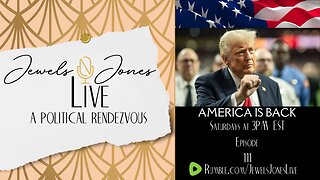 2:42:54
2:42:54
Jewels Jones Live ®
1 day agoAMERICA IS BACK | A Political Rendezvous - Ep. 111
24.5K34 -
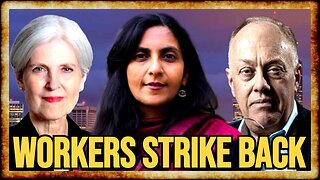 LIVE
LIVE
Due Dissidence
1 day agoLIVE: Workers Strike Back Conference ft. Chris Hedges, Jill Stein, Kshama Sawant, and More!
1,397 watching -
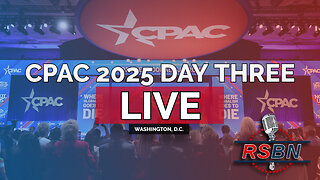 8:36:37
8:36:37
Right Side Broadcasting Network
5 days agoLIVE REPLAY: CPAC 2025 Day Three with President Donald J. Trump - 2/22/25
342K89 -
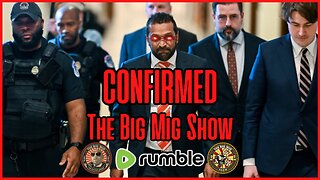 1:05:34
1:05:34
The Big Mig™
12 hours agoConfirmed Kash Patel New FBI Director, Bring On The Pain |EP483
54.5K19 -
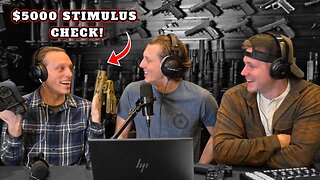 53:59
53:59
Tactical Advisor
8 hours agoThe Vault Room Podcast 009 | Everyone Getting $5000?!
50.6K11 -
 2:04:44
2:04:44
TheAlecLaceShow
19 hours agoLive at CPAC | Interviews with Dean Cain, Rep. Comer and more! | The Alec Lace Show
62.3K3 -
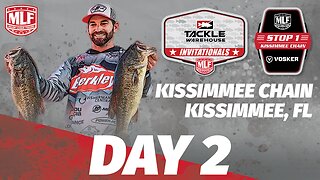 LIVE
LIVE
Major League Fishing
3 days agoLIVE Tackle Warehouse Invitationals, Stop 1, Day 2
441 watching -
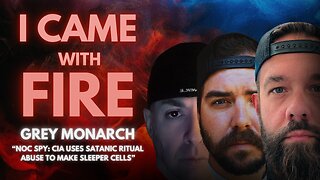 3:12:37
3:12:37
I_Came_With_Fire_Podcast
16 hours agoNOC Spy: CIA uses SATANIC RITUAL ABUSE to make SLEEPER Cells
69.1K14